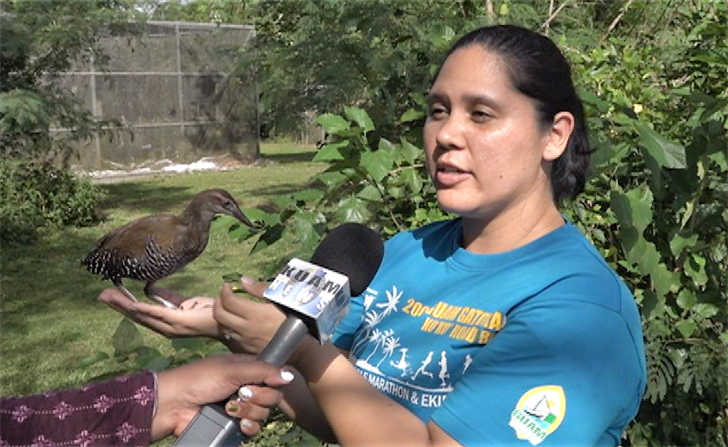Ko'ko' bird no longer extinct in the wild

It's definitely welcoming news to usher in 2020. The Ko'ko' bird becomes the second bird, the first being the California condor to be downgraded from "extinct in the wild" to "critically endangered."
Laura Duenas, a Wildlife Biologist with the Department of Agriculture says the recent announcement from the International Union of the Conservation of Nature is a major milestone for the Ko'ko' bird.
"It used to be extinct in the wild and now is critically endangered, because of our release populations on Cocos Island and Rota," she says.
The Ko'ko' or the Guam Rail in English, is a bird endemic to Guam, which means it was found only on Guam and nowhere else in the world.
"It's a flightless bird, nests and stays on the ground," Duenas said. "They do climb trees just like how you find a chicken up on a tree, they can do the same thing. And they're omnivorous, which means they eat everything from seeds and fruits to insects and small mice and things like that too."

Duenas says if they're able to get the status changed to - "no longer threatened at all" the Ko'ko' bird are great for pest control.
"They're really big heavy hitters for controlling insect species especially invasive species in the wild on Guam," Duenas said. "So once we get these back into Guam, it will definitely change the tide of how invasive species disperse and effect our island."
It was back in the 1960's where there was an estimated 60,000 Ko'ko' birds on Guam but then during the late 70's and early 80's there was a big decline in the bird population.
"That was attributed to the brown tree snake," The brown tree snake was found more and more in the jungles throughout Guam, from the south up to the north, the bird population mimicked that in the disappearance. As the snake population grew, the bird population started to decrease as well."
In the mid-'80s there was roughly about 21to 24 Ko'ko' birds left in the wild. Then in 1984, it was placed on the endangered species list. By 1987, they were able to catch 21 birds and put them in captivity. The next goal, according to Duenas, is to actually get them on Guam which is their native range.
"There's actually populations for the last five years, we've been monitoring the Ko'ko' population on rota and we've actually had it where we never had a disappearance in certain areas in Rota," she says. "And in fact, families with chicks, there's a stable population in Rota and that can act as a source population for Guam re-introductions."

Currently, there are about 200 Ko'ko' birds in the wild on Rota and another 60 are on Cocos Island.
"The people of Guam still have barriers to have access to them, you have to get on a boat or on a plane to actually see them in the wild," Duenas says. " What we want to do is perpetuate the importance of the birds, especially Guam's birds, the endemic ones, for all of us on Guam because if you can't see them, it's kind of out of sight, out of mind."
Duenas wants to thank the community for their constant support.
"Everything that everyone does, this whole change in supporting eco-friendly initiatives," she says. "It's also the revitalization of our culture. These guys have an aspect that they play in it and when they disappeared, we kind of lost that and to get that back, it's kind of mingling together and interwoven that the protection of our land it's not just us, it's the birds as well too."

